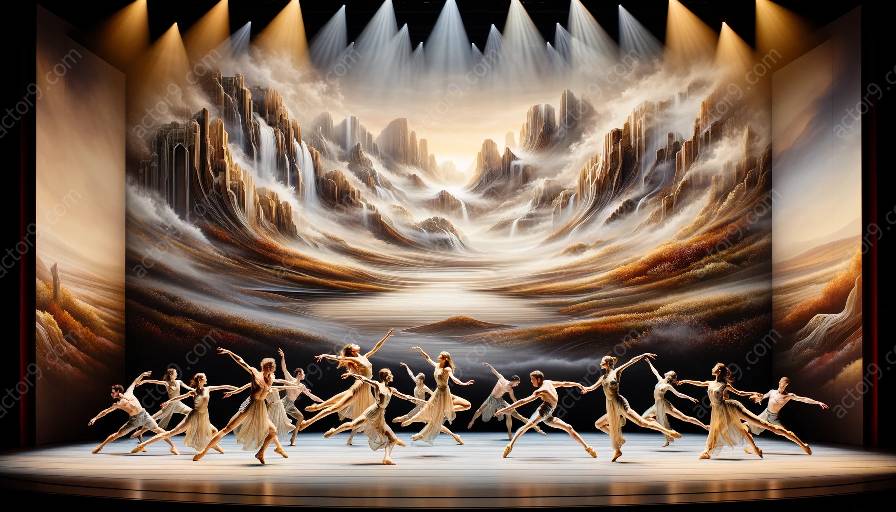Physical theatre choreography plays a crucial role in creating inclusive and accessible performances by embracing diversity and breaking down barriers to engagement. This article delves into the significance of physical theatre choreography, its impact on inclusive and accessible performance, and how it contributes to a truly immersive experience for all audience members.
The Essence of Physical Theatre Choreography
Physical theatre, characterized by its emphasis on movement, gesture, and physical expression as the primary means of storytelling, relies heavily on choreography to convey narratives. Choreography in physical theatre encompasses not only dance elements, but also the orchestration of movement, body language, and non-verbal communication to communicate emotions, themes, and ideas. It serves as a bridge between the performers and the audience, transcending language and cultural barriers.
Promoting Inclusivity through Physical Theatre Choreography
Inclusive performance involves catering to diverse audience members, including those with physical disabilities, sensory impairments, and differing cultural backgrounds. Physical theatre choreography contributes to inclusivity by offering a universal language of expression that can be understood and appreciated by individuals from various walks of life. Through intentional choreographic choices, such as incorporating diverse movements and gestures that resonate with different cultural traditions and experiences, physical theatre becomes more accessible and relatable to a wider audience.
Enhancing Accessibility through Thoughtful Choreographic Design
Accessibility in performance refers to ensuring that individuals with disabilities can fully participate and experience the show on an equal basis with others. Physical theatre choreography can enhance accessibility through thoughtful design that takes into account various mobility levels, sensory sensitivities, and cognitive differences. Choreographers and performers can work collaboratively to incorporate inclusive movements and staging techniques, considering factors such as wheelchair accessibility, sign language interpretation, audio descriptions, and tactile experiences, to create a more welcoming environment for all audience members.
Creating a Multisensory Experience
Physical theatre choreography has the power to create a multisensory experience that goes beyond verbal and auditory elements. Through the use of tactile interactions, visual stimuli, and kinesthetic engagement, choreographers can craft performances that resonate with individuals who may experience the world in non-traditional ways. By integrating elements such as textured surfaces, dynamic lighting effects, and expressive movements that evoke emotions through physical sensation, physical theatre choreography expands the sensory palette of the performance, transcending the limitations of traditional theatre.
Igniting Empathy and Understanding
Physical theatre choreography has the capacity to ignite empathy and foster understanding among audience members. Through the embodiment of diverse characters, experiences, and perspectives, choreographed performances encourage viewers to empathize with the emotions and struggles portrayed on stage. This can lead to greater awareness and appreciation of the diversity within the human experience, contributing to a more empathetic and inclusive society.
The Role of Innovation and Collaboration
Advancements in physical theatre choreography and collaborative partnerships with experts in accessibility and inclusivity bring new dimensions to performances. Innovative technologies, such as assistive listening devices and captioning systems, can be seamlessly integrated into choreographic design, further breaking down barriers for individuals with sensory impairments. Collaboration with accessibility consultants and community advocates ensures that choreography not only meets but exceeds standards for inclusivity and accessibility, enriching the overall experience for all spectators.
Conclusion
Physical theatre choreography is a driving force behind the creation of inclusive and accessible performances, as it transcends linguistic, cultural, and physical boundaries, and fosters a deeper connection with diverse audiences. By embracing the principles of inclusivity, thoughtful choreographic design, and innovative collaboration, physical theatre choreography paves the way for a more accessible and enriching theatre experience for all individuals, regardless of their background or abilities.




































